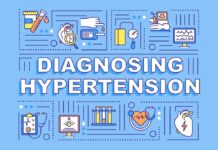If you've ever had diabetes, you know that it can be a challenging condition to manage. If you have prediabetes or are at high risk for developing Type 2 diabetes, these tips can help you prevent the disease.
Rather than being an isolated disease, diabetes is a cluster of metabolic disorders known as hyperglycemia or high blood sugar levels.
While there are several types of diabetes, the most common ones are type 1 and type 2. The prevalence of diabetes continues to grow in epidemic proportions.
According to the U.S. Centers for Disease Control and Prevention (CDC), approximately one in 10 Americans has been diagnosed with either type 1 or type 2 diabetes. In fact, almost half of those who have been diagnosed with type 2 diabetes are unaware that they have it!
So if you think you might be at risk for developing this condition—or if you suspect that you already have it—read on to learn about its symptoms, causes, treatment, and prevention.
What is Diabetes?
The term "diabetes" comes from the Greek word for siphon, which means "passing through." This refers to the fact that glucose (a form of sugar) passes through the body without being absorbed.
In other words, diabetes is a condition when your body is unable to convert food into energy. There are several types of diabetes, including ones in which your body either does not produce enough insulin or your cells are unable to utilize the insulin you produce.
Insulin is a hormone that converts nutrients to energy for cells throughout the body and prevents blood glucose levels from increasing.
In type 1 diabetes, the body is incapable of producing insulin. However, in type 2, the body either does not make enough insulin or the cells fail to respond to insulin properly.
In both types of diabetes, glucose builds up in the blood instead of entering cells. This can lead to serious complications if left untreated—and sometimes even when treated!
Different Types of Diabetes
There are several different types of diabetes. The two most common are type 1 and type 2.
Type 1 Diabetes
This type of diabetes was previously called insulin-dependent or juvenile-onset diabetes. It is a lifelong condition in which the pancreas stops producing insulin, or the body's cells do not respond to insulin properly, leading to high blood sugar levels.
The term juvenile-onset diabetes is used to refer to type 1 diabetes that typically develops in children and adolescents but can also develop in adults. Type 1 diabetics must take insulin on a daily basis for the rest of their lives.
Causes of Type 1 Diabetes
It is common for people with type 1 diabetes to develop an immune system problem. Your immune system normally protects you from viruses, bacteria, and other foreign objects. However, the immune system of people with type 1 diabetes attacks insulin-producing cells in the pancreas as a defense mechanism.
In most cases, we do not yet know what causes type 1 diabetes. It is believed to be caused by a combination of genetic and environmental factors that trigger your immune system to destroy the insulin-producing cells in your pancreas. This makes it difficult for your body to control its blood glucose levels.
The following may increase your risk of developing type 1 diabetes:
- Being Caucasian [1]Daphne E. Smith-Marsh PharmD, CDE, Clinical Assistant Professor/Clinical Pharmacist - Ambulatory Care Pharmacy. (2016, March 1). Type 1 Diabetes Risk Factors. Endoctrineweb. Retrieved September … Continue reading
- Having a family member with type 1 diabetes [2]Diabetes Risk Factors. (2022b, April 5). Centers for Disease Control and Prevention. Retrieved September 2, 2022, from https://www.cdc.gov/diabetes/basics/risk-factors.html
- Having a family member with other autoimmune diseases such as celiac disease, Addison's disease, or vitiligo [3]Milluzzo, A., Falorni, A., Brozzetti, A., Pezzino, G., Tomaselli, L., Tumminia, A., Frittitta, L., Vigneri, R., & Sciacca, L. (2021, February). Risk for Coexistent Autoimmune Diseases in Familial … Continue reading [4]Witek PR, Witek J, Pańkowska E. Choroby autoimmunologiczne w cukrzycy typu 1 - badania przesiewowe, diagnostyka I leczenie Type 1 diabetes-associated autoimmune diseases: screening, diagnostic … Continue reading
- Having certain genetic markers that increase your risk of developing type 1 diabetes [5]Steck, A. K., & Rewers, M. J. (2011, February 1). Genetics of Type 1 Diabetes. Clinical Chemistry, 57(2), 176–185. https://doi.org/10.1373/clinchem.2010.148221
- Having had a viral infection within 6 months of symptoms developing (particularly rubella [German measles], cytomegalovirus, and coxsackievirus)
Some babies who develop type 1 diabetes have an unusual protein called islet cell autoantibodies in their blood. This protein seems to cause the immune system to attack and destroy the insulin-producing beta cells.
About 10% of children who are later diagnosed with type 1 diabetes have this unusual protein in their blood.
However, most children who have this protein never develop type 1 diabetes. This finding suggests that there may be other factors involved in causing type 1 diabetes as well.
Symptoms of Type 1 Diabetes
Symptoms usually start between the ages of 3 and 4 years. The symptoms are usually:
- Blurred vision, called "diabetic retinopathy"
- Frequent urination, called "diabetic nephropathy"
- Fatigue and weakness, called "diabetic neuropathy"
- Some people with type 1 diabetes also have:
- Growth retardation (usually mild)
- Eye problems (usually minor)
- Fatigue or irritability (rarely)
How is Type 1 Diabetes Treated?
Insulin is used to treat type 1 diabetes. Diabetes type 1 results from the pancreas' inability to make insulin, a hormone that regulates blood sugar levels. Insulin has many roles in the body. In order for cells to use glucose (sugar) for energy, insulin helps glucose (sugar) get into them.
If there is too much glucose in the blood, then insulin reduces how much glucose gets into cells, and it causes glucose to be removed from the blood and stored as glycogen (a form of starch) in the liver and muscle cells.
Insulin is made by beta cells inside the pancreas from a protein called proinsulin. The beta cells are destroyed by an autoimmune attack on them caused by an abnormal protein called anti-insulin antibodies (called "islet autoantibodies").
This autoimmune attack on beta cells causes people with type 1 diabetes to have very high levels of blood sugar and low levels of insulin after eating carbohydrate foods like bread or pasta.
Insulin must be given to control diabetes, but when injected into a vein, it often causes allergic reactions called Hypoglycemia (low blood sugar).
To prevent hypoglycemia, people with type 1 diabetes need to measure their blood sugar levels before meals, often several times each day; they also need to take special food items that raise their blood sugar quickly after eating them (such as candy or hard candy), and they need to eat at regular times each day.
Type 2 Diabetes
Type 2 diabetes is caused by a combination of genetic and environmental factors. Sometimes it is called maturity-onset diabetes or insulin-dependent diabetes.
In this type of diabetes, the body can no longer make enough insulin to supply all the glucose that needs to be transported into cells (glucose is the form of sugar used by cells to make energy).
The main reason for this poor ability to make insulin is that the body's cells do not normally respond to insulin. This abnormality in cell response to insulin results in elevated blood glucose levels after eating foods that contain carbohydrates.
Type 2 diabetes is also called noninsulin-dependent diabetes mellitus (NIDDM). NIDDM is sometimes called "adult-onset" diabetes because children and teenagers who have it often have very good control of their blood sugar levels when they are diagnosed with it.
However, blood sugar levels tend to become unstable over time, and the person develops problems controlling their blood sugar levels if they don't take some type of medication (usually a combination of oral medicine and/or injection) daily.
In addition, people with NIDDM often need some help from a dietitian or nutritionist who understands what foods cause high blood sugar levels in people with NIDDM.
Causes of Type 2 Diabetes
Type 2 diabetes is caused by the body's cells not responding normally to insulin. This can happen when the cells become resistant to insulin or when the body's cells do not produce enough insulin. It is believed that this resistance is caused by a combination of factors, including:
Genetics
People with type 2 diabetes have a higher risk of developing it if they have family members with type 2 diabetes. This can be due to genetics. [6]The link between family history and risk of type 2 diabetes is not explained by anthropometric, lifestyle or genetic risk factors: the EPIC-InterAct study. (2012, September 28). … Continue reading
Studies suggest that having several first-degree relatives with type 2 diabetes increases your chances by about 50 percent; having two first-degree relatives diagnosed with non-insulin-dependent (type 1) diabetes increases your chances by about 80 percent. [7]Thorn, L. M., Forsblom, C., Wadén, J., Söderlund, J., Rosengård-Bärlund, M., Saraheimo, M., Heikkilä, O., Hietala, K., Pettersson-Fernholm, K., Ilonen, J., & Groop, P. H. (2009, January … Continue reading [8]Tuomi, T. (2005, December 1). Type 1 and Type 2 Diabetes. Diabetes, 54(suppl_2), S40–S45. https://doi.org/10.2337/diabetes.54.suppl_2.s40
However, it is also known that having too much fat in the blood (called hyperglycemia) and having too much fat in the liver (called non-alcoholic fatty liver disease) can both increase your risk of developing diabetes.
Physical activity
Type 2 diabetes usually develops after the age of 45 years old in people who are overweight or obese and who are not physically active (such as people who sit most of their day at work).
People who exercise regularly have a lower risk of developing type 2 diabetes, but the risk is not significantly different between people of different racial or ethnic groups.
Race/ethnicity
People of Asian descent [9]McNeely, M. J., & Boyko, E. J. (2004, January 1). Type 2 Diabetes Prevalence in Asian Americans. Diabetes Care, 27(1), 66–69. https://doi.org/10.2337/diacare.27.1.66 have the highest risk for diabetes compared to other racial/ethnic groups in the U.S. However, Asian Americans still have lower rates than non-Hispanic whites.
In addition, African Americans have the lowest rate of type 2 diabetes compared to other racial/ethnic groups in the U.S., although they still have higher rates than non-Hispanic whites.
Age at Diagnosis
Younger age is associated with having more severe disease (higher blood glucose levels) and more frequent complications (heart disease and kidney disease), such as eye problems and amputations from nerve damage from neuropathy (nerve pain).
Younger age also increases your risk for death from any cause during follow-up after diagnosis with type 2 diabetes because of the risk of cardiovascular disease and other complications.
Weight
People with a higher body mass index (BMI) are at higher risk for diabetes than those with a lower BMI. However, even within a given BMI category, people can have different rates of diabetes based on their genetics or other factors.
A person's weight status may also change over time, so it's important to monitor weight status over time in those at increased risk for diabetes.
Gender
Women are more likely to develop type 2 diabetes than men, but the rate is not significantly different between men and women in any racial or ethnic group.
Stress
People who are under great emotional or physical stress may be more likely to develop type 2 diabetes than those who are less stressed.
Symptoms of Type 2 Diabetes
Symptoms of type 2 diabetes usually appear gradually and may include:
- Increased thirst
- Excessive urination
- Frequent hunger and fatigue
- Weight loss or inability to lose weight even with diet and exercise (called obesity)
- Darkened skin color (called "pigmentary retinopathy") in the back of the eyes (called "neovascularization") or around the mouth and nose (called "peripapillary atrophy"), causing vision problems called eye disease. This is more common in people who are obese.
How is Type 2 Diabetes Treated?
Many people with type 2 diabetes who are overweight and have high blood sugar levels can lose weight and reduce their blood sugar by following a healthy diet and exercise plan. If they are overweight, they should try to lose weight through diet and exercise, but they should also see a doctor to determine whether or not they should be placed on medication.
Healthy lifestyle changes can help prevent type 2 diabetes from developing in those who already have it. For some people, medications may help lower blood sugar levels during the day, so they do not need insulin at bedtime. But there is no cure for type 2 diabetes, so permanent control of blood sugar levels requires lifelong management of your blood sugar level through diet and exercise.
Gestational Diabetes
Gestational diabetes is a temporary condition that develops during pregnancy. It is very rare in the United States, but it may occur in up to 1 in 100 women who are pregnant and have a family history of diabetes. Gestational diabetes is diagnosed by measuring blood sugar levels before and after you give birth.
People with gestational diabetes can treat it with diet and exercise, but it does not usually require medication. If you are concerned about your blood sugar level, talk to your doctor or nurse about whether or not you should be tested for gestational diabetes.
Symptoms of Gestational Diabetes
Some women have no symptoms of gestational diabetes. Most women have some of the following symptoms during pregnancy:
- Frequent urination
- Extreme thirst or frequent consumption of liquid beverages
- Increased appetite for sweet foods, but not for other foods or fluids
- Increased weight gain
- Frequent hunger and fatigue, especially during the last trimester of pregnancy.
- Breast tenderness or swelling (especially in the last trimester of pregnancy)
- Blurred vision or other vision changes.
How Is Diabetes Diagnosed?
Diabetes is diagnosed with a blood test. The American Diabetes Association recommends that people with risk factors for diabetes have a blood test called hemoglobin A1c to screen for diabetes. If the result is 6.5 percent or higher, the person should be tested again on another day to confirm the diagnosis.
The ADA also recommends that people without risk factors for diabetes have a blood test if they are overweight (especially if their waist measurement is greater than 40 inches in men or 35 inches in women) and are between ages 45 and 70, especially if they have other risk factors such as high blood pressure, high cholesterol, or a family history of type 2 diabetes.
If you do not know whether you have type 1 or type 2 diabetes, your doctor may check your blood glucose level again after two hours. If your level remains high, you'll likely be sent to an endocrinologist specializing in diabetes to confirm the diagnosis and determine what treatment best suits your needs.
If you are diagnosed with type 2 diabetes, it is important to determine whether you also have cardiovascular disease (CVD). The presence of CVD further increases the risk of developing complications from diabetes and decreases life expectancy compared with having type 2 diabetes alone.
Prediabetes
Prediabetes is a condition that occurs when blood glucose levels are higher than normal but not high enough to be diagnosed as type 2 diabetes. Prediabetes is associated with an increased risk of developing type 2 diabetes and cardiovascular disease. Prediabetes is also known as impaired glucose tolerance (IGT).
The ADA recommends that people with prediabetes or IGT should be treated sooner rather than later to prevent type 2 diabetes [10]Prediabetes | ADA. (n.d.). Retrieved September 3, 2022, from https://diabetes.org/diabetes/prediabetes. The goal of treatment is to return blood sugar levels to normal, which reduces the risk of complications that can occur when blood sugar levels are too high.
In addition, the ADA recommends lifestyle changes to prevent or delay the onset of type 2 diabetes by helping you maintain a healthy weight and exercise regularly. These include eating a healthy diet, maintaining healthy body weight, being physically active for at least 30 minutes per day, and limiting alcohol intake to one drink per day for women or two drinks per day for men.
The American Diabetes Association does not recommend routine screening for type 1 diabetes in children younger than 7 years old because there is no proven benefit from such screening in this age group, and it may lead to unnecessary anxiety in children who do not have symptoms yet.
As with all diseases, there are certain times when testing should be performed: before pregnancy, during pregnancy, if you have symptoms suggesting your health may be declining (such as frequent urination due to kidney problems), if you travel internationally often, if you experience frequent infections or fevers (especially if they are unexplained), or if you are over the age of 60.
To diagnose type 1 diabetes, a health care provider will review your medical history and perform a physical examination. They will ask about your symptoms and the period in which they began.
Your doctor may perform several tests to look for possible causes of diabetes, including blood and urine tests for glucose, an electrocardiogram (ECG) to check for heart problems and an X-ray to check for abnormalities that can cause damage to nerves or blood vessels.
The most important test is called a glucose tolerance test, also known as a GTT. This test measures how much glucose your body can use before it turns into energy (glucose).
You will have this test if your health care provider suspects you have type 1 diabetes or if you have been diagnosed with type 2 diabetes but are not yet taking medication. The GTT is usually done at the same time as other tests in this section of the examination because it can help determine how well you control your blood sugar levels.
After performing all these tests, your health care provider may still need more information from you before he or she can confidently diagnose you with type 1 diabetes or type 2 diabetes (previously known as non-insulin dependent diabetes).
Treatment
The first step towards successful treatment is to change your lifestyle behaviors—eating right and exercising more! However, if lifestyle changes alone do not keep your blood glucose levels in the target range or if you have complications from diabetes such as kidney disease or heart disease, then medication may be necessary to help control your blood glucose levels.
There are multiple classes of medications used to treat both types of diabetes:
- Insulin secretagogues (sulfonylureas)
- Insulin sensitizers (biguanides)
- Incretin enhancers (glucagon-like peptide-1 [GLP-1] agonists)
- Dipeptidyl peptidase-4 (DPP-4) inhibitors
- Glucosidase inhibitors
- Alpha-glucosidase inhibitors
- Amylin analogs
Conclusion
Diabetes is a disease that affects millions of people around the world. It can be difficult to live with, but it is highly treatable. With the help of your health care provider and your doctor, you can manage and control your diabetes.
There are many ways to reduce the risk of developing diabetes and improve your health if you already have the condition. Taking care of your health can reduce the risk of diabetes-related complications.
If you have diabetes, you can improve your blood sugar levels by exercising, eating a healthy diet, and monitoring your blood sugar levels regularly.
References
| ↑1 | Daphne E. Smith-Marsh PharmD, CDE, Clinical Assistant Professor/Clinical Pharmacist - Ambulatory Care Pharmacy. (2016, March 1). Type 1 Diabetes Risk Factors. Endoctrineweb. Retrieved September 2, 2022, from https://www.endocrineweb.com/conditions/type-1-diabetes/type-1-diabetes-risk-factors |
|---|---|
| ↑2 | Diabetes Risk Factors. (2022b, April 5). Centers for Disease Control and Prevention. Retrieved September 2, 2022, from https://www.cdc.gov/diabetes/basics/risk-factors.html |
| ↑3 | Milluzzo, A., Falorni, A., Brozzetti, A., Pezzino, G., Tomaselli, L., Tumminia, A., Frittitta, L., Vigneri, R., & Sciacca, L. (2021, February). Risk for Coexistent Autoimmune Diseases in Familial and Sporadic Type 1 Diabetes is Related to Age at Diabetes Onset. Endocrine Practice, 27(2), 110–117. https://doi.org/10.1016/j.eprac.2020.09.012 |
| ↑4 | Witek PR, Witek J, Pańkowska E. Choroby autoimmunologiczne w cukrzycy typu 1 - badania przesiewowe, diagnostyka I leczenie Type 1 diabetes-associated autoimmune diseases: screening, diagnostic principles and management. Med Wieku Rozwoj. 2012 Jan-Mar;16(1):23-34. Polish. PMID: 2251677 |
| ↑5 | Steck, A. K., & Rewers, M. J. (2011, February 1). Genetics of Type 1 Diabetes. Clinical Chemistry, 57(2), 176–185. https://doi.org/10.1373/clinchem.2010.148221 |
| ↑6 | The link between family history and risk of type 2 diabetes is not explained by anthropometric, lifestyle or genetic risk factors: the EPIC-InterAct study. (2012, September 28). Diabetologia, 56(1), 60–69. https://doi.org/10.1007/s00125-012-2715-x |
| ↑7 | Thorn, L. M., Forsblom, C., Wadén, J., Söderlund, J., Rosengård-Bärlund, M., Saraheimo, M., Heikkilä, O., Hietala, K., Pettersson-Fernholm, K., Ilonen, J., & Groop, P. H. (2009, January 1). Effect of Parental Type 2 Diabetes on Offspring With Type 1 Diabetes. Diabetes Care, 32(1), 63–68. https://doi.org/10.2337/dc08-0472 |
| ↑8 | Tuomi, T. (2005, December 1). Type 1 and Type 2 Diabetes. Diabetes, 54(suppl_2), S40–S45. https://doi.org/10.2337/diabetes.54.suppl_2.s40 |
| ↑9 | McNeely, M. J., & Boyko, E. J. (2004, January 1). Type 2 Diabetes Prevalence in Asian Americans. Diabetes Care, 27(1), 66–69. https://doi.org/10.2337/diacare.27.1.66 |
| ↑10 | Prediabetes | ADA. (n.d.). Retrieved September 3, 2022, from https://diabetes.org/diabetes/prediabetes |






